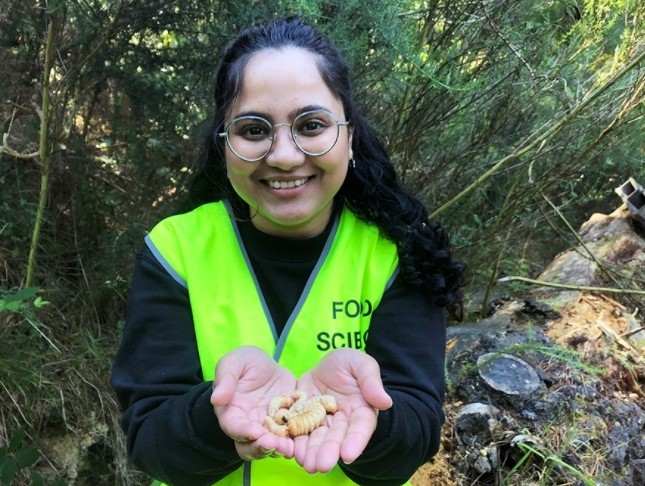Huhu grub’s nutritional profile places insect in alternative protein category

Research into the Huhu grubs or Huhu beetle larvae found a protein content ranging from 26.2 – 30.5%, a relatively high level when compared to beef (21%), lamb (20.3%), chicken (17.4%), soy (13%), and chickpeas (20.5%).
Added to its high fat content (32.1–58.4%), the insect also boasts an impressive 28 minerals, (11 essential, 13 non-essential, and four heavy metals) in its mineral make up.
“We found that the grubs were rich in essential minerals which all play vital roles in human health and nutrition,” explains lead study author Ruchita Rao Kavle, who is based at the University of Otago in New Zealand.
“The most abundant been manganese, magnesium, phosphorus, iron, copper, and zinc."
Development stages
A proximate analysis by the team from the University found that Huhu grubs contained 58.7–75.2% moisture, 26.2–30.5% protein, 32.1–58.4% fat, and 1.5–3.2% ash dry weight basis.
Forty minerals were investigated for four different development stages of wild harvested Huhu grubs (small, medium, and large larvae and pupae).
The larvae were separated into the four different development sizes and the weight and length of the grubs were recorded prior to storing at −80 °C.
Replicate samples (n = 3) of ten pooled Huhu grubs of each of the small, medium, and large larvae and pupae were freeze-dried for proximate composition and mineral analysis.
The most abundant minerals were manganese, magnesium, phosphorus, iron, copper, and zinc, the study found.
The heavy metal content of Huhu grubs was found to be below detection levels for arsenic and vanadium, but cadmium and lead were detectable.
EU mineral limits
In New Zealand, standards for heavy metals in edible insect material for human consumption are not available.
The European Union, however, has established limits for non-essential minerals, such as arsenic, vanadium, lead, and cadmium in foods
“Huhu grubs had low levels of the heavy metals arsenic, vanadium, lead, and cadmium,” the study team concludes.
“When compared to that of mealworm and some conventional foods, Huhu grubs were found to have substantial levels of potassium, phosphorus, and magnesium, as well as iron, manganese, copper, and zinc, but had comparable levels of calcium and sodium.
“Huhu grubs contain more than 5% protein and, therefore, based on WHO recommendations, can be considered a ‘good source of protein’.
“The present study indicates, based on proximate and mineral analysis, that wild harvested Huhu grubs in New Zealand can be considered nutritious and safe for consumption in moderate quantities.”
Dry powder form
According to study supervisor and co-author Dr Dominic Agyei, Huhu grubs have not been accessible commercially in New Zealand.
Traditionally, the large larvae are consumed either raw or fried. This does not preclude their use in other forms, such as dry powders.
With the growing interest in sustainability, alternative proteins, and the need to diversify food sources, the Huhu grub joins the mealworm and crickets as viable options to traditional protein sources that are environmentally intensive to farm.
"A focus on indigenous foods, particularly their unique nutritional and health properties, and alternative proteins is surging,” Dr Agyei says.
“This study on the huhu comes on the back of other research we have also undertaken on the larvae of several edible insects such as mealworms and black soldier flies."
Source: Institute of Food Science & Technology
Published online: doi.org/10.1111/ijfs.15545
“Macronutrients and mineral composition of wild harvested Prionoplus reticularis edible insect at various development stages: nutritional and mineral safety implications.”
Authors: Ruchita Rao Kavle et al.















